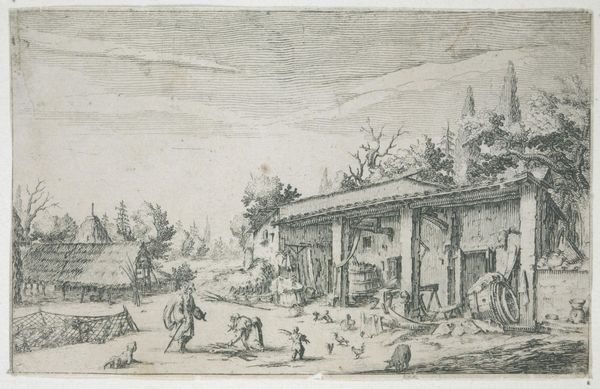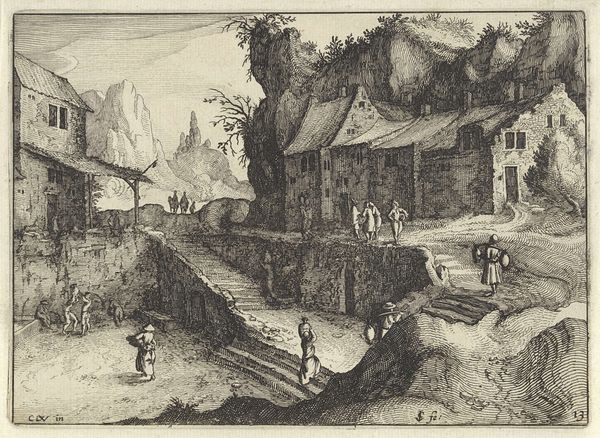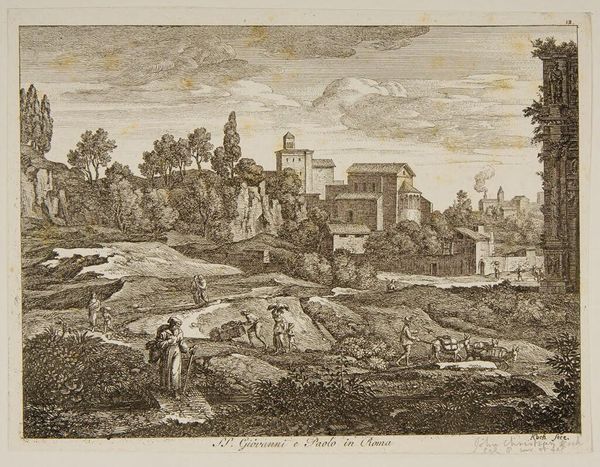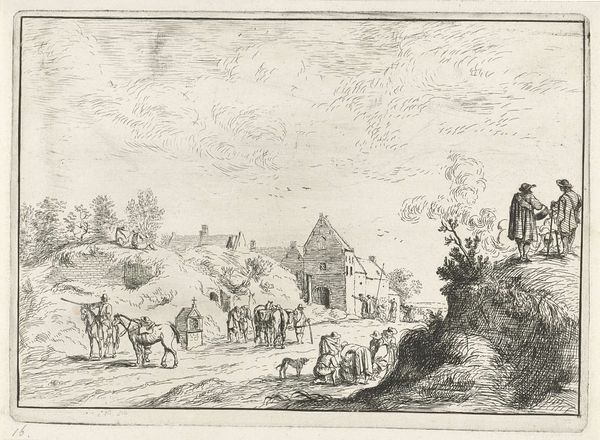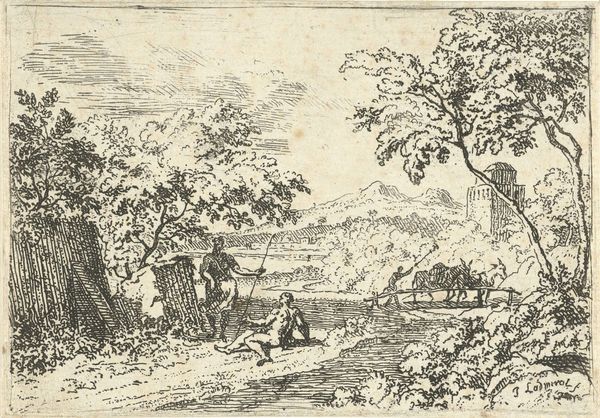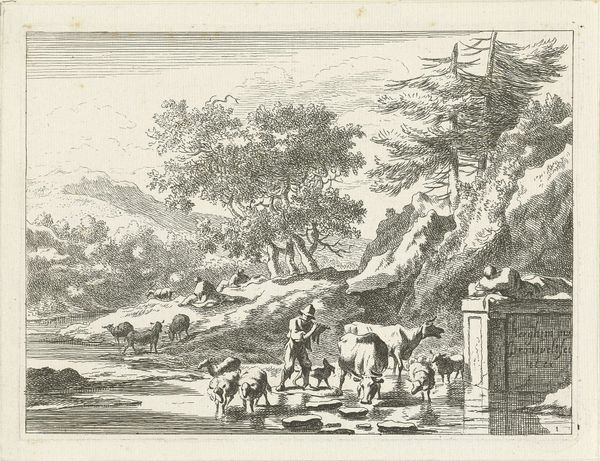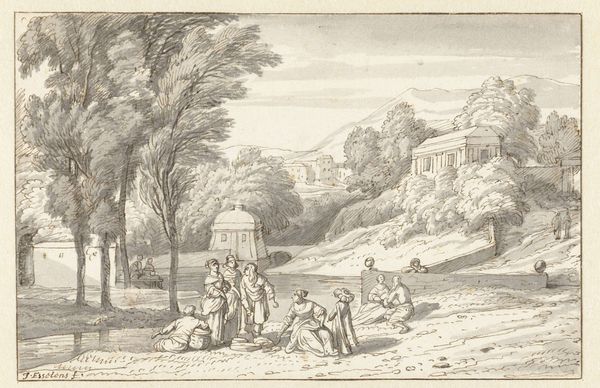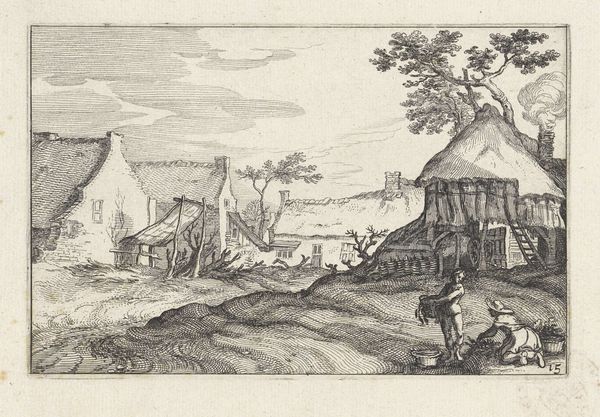
drawing, print, etching
#
drawing
# print
#
pen sketch
#
etching
#
pencil sketch
#
landscape
#
genre-painting
Dimensions: height 101 mm, width 142 mm
Copyright: Rijks Museum: Open Domain
François Collignon created this etching, Elias en de weduwe van Sarepta, sometime in the 17th century. Collignon’s print illustrates a scene from the Hebrew Bible, in which the prophet Elijah asks a widow in the town of Zarephath to share her last bit of food during a famine. What might it have meant for Collignon, a man, to depict this encounter? The power dynamic between the two figures depicted highlights not only the inequality between them but also the very limited role of women in 17th century European society. Here, the widow is placed in the domestic sphere, as if her identity is limited to those boundaries. But within that sphere, she possesses both power and agency. She is the sole provider for her child, and the only thing standing between them and starvation. The etching suggests an emotional encounter. By depicting this intimate moment, Collignon asks us to reflect on themes of survival, faith, and the complex negotiations of power within gendered and religious contexts.
Comments
No comments
Be the first to comment and join the conversation on the ultimate creative platform.
